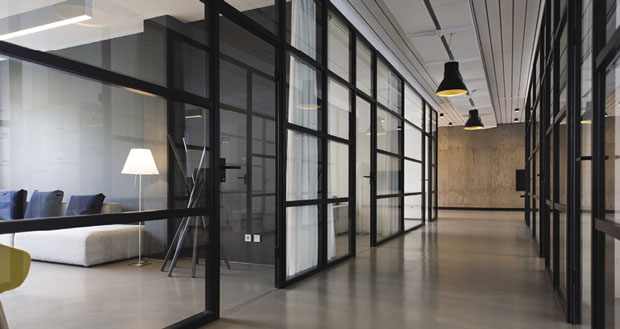Amanda Speight, National Business Development Manager at CFE Lighting reveals the latest commercial lighting trends
Offices are being transformed into more collaborative spaces, with common areas and conference rooms being modified to allow more space per individual. There will no longer be a one-size-fits-all solution when it comes to lighting, with a more complex mix of lighting required to illuminate the different areas that make up any office space. Comfortable ambient lighting will remain important for open seating areas, while more specialised lighting will be employed in communal spaces. In reception areas, where businesses will want to be safely registering visitors, brighter, more clinical lighting may be used.
MAKING A STATEMENT
To tempt employees back into the office, employers are investing in their interior and statement lighting to create attractive, exciting environments where people can truly enjoy spending their time. As this trend develops, there may be a surge in demand for statement lighting, with pendants and other decorative-style lights increasingly appearing in workplaces as we move away from rows of desks to more collaborative, shared, boutique-style spaces.
We can expect to see a significant jump in demand for quality products that deliver low glare, low flicker, and higher colour rendering. Visual balance will move up the light quality agenda, with more focus given to avoid substantial changes in light levels as employees move around the office.
THE CIRCULAR ECONOMY
With more of a focus than ever before on the impact we’re all having on the planet there will be more emphasis than ever on lighting equipment being manufactured, maintained, and recycled in line with circular economy principles. There’s an increasing recognition amongst switched on facilities managers that buying cheap lighting products is not only a false economy, but it’s also bad from a sustainability perspective, with cheap products often having a significantly shorter life-span than more quality alternatives.
Quality and durability are now key considerations and UK manufacturers are increasingly going the extra mile to ensure that their products meet this criterion. All too often, cheap products are discarded when there’s a problem because it’s either impossible to service them or very difficult. Quality products are generally far easier to maintain and service, prolonging the life of the application and creating less waste.
British-made lighting systems are some of the best in the world, and I believe we’ll see greater demand for British-made systems moving forward in line with more of a focus on quality and sustainability.
IN CONTROL
Intelligent lighting controls can be used to dim or turn off unnecessary lighting. Using motion-detecting sensors, will deliver a myriad of benefits including significant net energy savings, increased lighting control and performance, and access to real-time data to inform operating decisions.
Many modern systems can work wirelessly, and their versatility means they can be applied in any environment to suit any needs – which is especially beneficial for retrofitting or for commercial offices with hard-to-wire areas.






